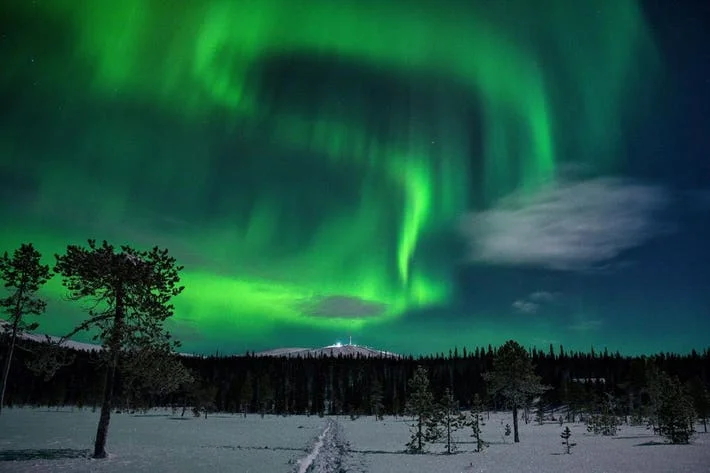
Aurora Alert: Geomagnetic Storms Could Bring Northern Lights to US States – Here’s How to Watch
Get ready for a celestial spectacle! Recent coronal mass ejections and high-speed solar winds are creating geomagnetic storm conditions, potentially bringing the mesmerizing Northern Lights, also known as Aurora Borealis, to lower latitudes than usual. If you're in the northern United States, this is your chance to witness this breathtaking phenomenon.
According to the National Oceanic and Atmospheric Administration (NOAA), a Kp index of three, potentially rising to nearly five, means the aurora could be visible in states like South Dakota, Maine, and others along the Canadian border. The peak viewing time is typically between 10 p.m. and 2 a.m. local time.

Where to Look: For the best views, head to a high vantage point facing north, away from city lights. Northern Canada and Alaska will have the highest likelihood of seeing the aurora. However, residents in northeastern Washington, northern Idaho, Montana, North Dakota, Minnesota, Upper Michigan, and Wisconsin also have a chance.
A Solar Maximum Showcase: This increased auroral activity is linked to the sun reaching its solar maximum, an 11-year cycle peak characterized by more frequent solar events. Scientists at NOAA and NASA expect this peak to continue into early 2026, suggesting that more people will have the opportunity to witness the Northern Lights.
Capturing the Moment: Want to photograph this incredible display? For smartphones, NOAA recommends using night mode with the flash off. For regular cameras, photography experts suggest a wide-angle lens, an aperture of f/4 or less, and a focus set to the furthest possible setting.

Remember the Geomagnetic Storm: Be aware that geomagnetic storms can impact Earth, though at minor levels during this event with indicators around a Kp index of 4. The magnetic storms cause interactions between the Earth's magnetic field and particles from the sun. Geomagnetic conditions can disrupt radio signals or interfere with GPS, according to NASA.
The recent geomagnetic storm in May 2024 even brought the northern lights as far south as Texas and Florida, highlighting the potential for widespread visibility during periods of heightened solar activity.
Are you planning to head out and try to catch a glimpse of the aurora? What are your favorite tips for photographing the night sky? Share your experiences and thoughts in the comments below!